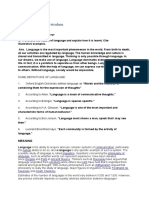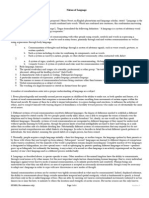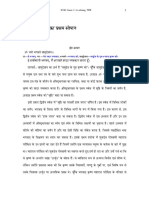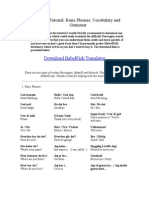0% found this document useful (0 votes)
12 views22 pagesTopic 3 Language and Communication Issues
The document discusses the unique characteristics of human language compared to animal communication, emphasizing its complexity and role in cognitive development. It explores the relationship between language and culture, highlighting how language encodes societal values and norms, and how it evolves with cultural changes. Additionally, it examines the significance of language in social interactions and its impact on human behavior and identity.
Uploaded by
bsoc-pps-29-24Copyright
© © All Rights Reserved
We take content rights seriously. If you suspect this is your content, claim it here.
Available Formats
Download as PPTX, PDF, TXT or read online on Scribd
0% found this document useful (0 votes)
12 views22 pagesTopic 3 Language and Communication Issues
The document discusses the unique characteristics of human language compared to animal communication, emphasizing its complexity and role in cognitive development. It explores the relationship between language and culture, highlighting how language encodes societal values and norms, and how it evolves with cultural changes. Additionally, it examines the significance of language in social interactions and its impact on human behavior and identity.
Uploaded by
bsoc-pps-29-24Copyright
© © All Rights Reserved
We take content rights seriously. If you suspect this is your content, claim it here.
Available Formats
Download as PPTX, PDF, TXT or read online on Scribd
/ 22

























































































